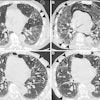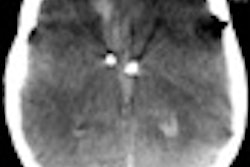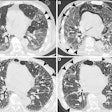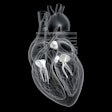Radiologists and clinicians working with high-resolution PET/CT should adjust standardized uptake values (SUVs) accordingly to reduce the chance of errors in classifying head and neck tumors, according to researchers from the University of Minnesota in Minneapolis.
In a recent study, the team found that maximum SUVs for head and neck lesions are significantly higher with high-resolution PET/CT than with conventional or lower-resolution systems. The researchers also recommend the development of revised maximum SUV criteria for high-resolution PET/CT imaging in head and neck tumor detection and subsequent patient follow-up.
"We have to adjust the SUV for each new upgrade of a PET/CT scanner and make people aware they cannot use the same SUV cutoff that was historically the limit," said Dr. Bharathidasan Jagadeesan, a radiology resident at the University of Minnesota and co-author of the study. "If they go by the previous cutoff of 2.5 (SUVs) -- which is the most widely used -- then they will overcall a lot of benign lesions as malignant, because the high-resolution PET/CT will give much higher values. A lesion which is 4 SUVs on the high-resolution PET/CT can still be benign."
Presented at the 2007 RSNA meeting in Chicago, the study included 36 patients who underwent high-resolution PET/CT and conventional PET/CT on the same day.
Using a Biograph 16 PET/CT system (Siemens Medical Solutions, Malvern, PA), high-resolution PET/CT images were obtained from noncontrast head and neck CT images, acquired 60 minutes after intravenous administration of 11.5 mCi to 17.3 mCi of F-18 FDG, and subsequent high-resolution PET imaging (with two 10-minute bed positions).
Low-resolution PET/CT images were acquired through contrast-enhanced CT images at 90 minutes post-FDG injection and conventional PET imaging (three-minute bed positions).
"The acquisition time for the high-resolution study is longer, because we did not want to increase the (radiation) dose just for this study," Jagadeesan noted. "So, we used the same dosage and increased the acquisition time."
Data analysis
The researchers analyzed a total of 122 lesions from 21 females and 15 males with biopsy-proven head and neck cancers. Twenty-nine cases involved squamous cell carcinoma of the head and neck.
The group determined that lesion maximum SUVs with high-resolution PET/CT were significantly higher than corresponding lower-resolution PET/CT maximum SUVs. The mean ratio of high-resolution PET/CT to conventional PET/CT maximum SUV ratio was 1.44 (± 0.44).
The average SUV for high-resolution PET/CT was 11.72 with a standard deviation of 7.97. The average SUV for conventional PET/CT was 8.72 with a standard deviation of 5.89. Following normalization, corrected high-resolution PET/CT maximum SUVs still were significantly higher than corrected PET/CT values, with a mean ratio of 1.25 (± 0.33).
The researchers also performed volumetric measurements of each lesion. "We found that for very small lesions that are less than 8 cm in volume and approximately 2 cm in diameter, the differences were much higher," Jagadeesan said. "For larger lesions, which are more than 4 cm in each dimension, the differences were much less."
Reference organ
The study also investigated whether it was possible to normalize tumor maximum SUVs by using ipsilateral cerebellar maximum SUVs to eliminate the difference, if any, between the two technologies. The researchers' hypothesis is analogous to using the liver as a stable reference organ when measuring for renal uptake.
The researchers chose the cerebellum as a potential reference organ because it is not usually altered in many pathology conditions, according to Jagadeesan.
"We thought that if we measured the cerebellum uptake in the lower-resolution PET and higher-resolution PET and figured the ratio between the lesion and cerebellum uptake in both, maybe the ratio would be the same between the two studies," he explained. "All we would have to do is tell people, 'If your lesion-to-cerebellum ratio is more than 1.5, then it is a tumor.' When we analyzed the data, we found that we could not do that, so there is no easy fix."
Based on the study results, the team found that high-resolution PET/CT ipsilateral cerebellar maximum SUVs also were significantly higher than corresponding low-resolution PET/CT maximum SUVs, with a mean cerebellar ratio of 1.12 (± 0.19).
The next step
In follow-up studies on the study's patients, the researchers found that both high-resolution and conventional PET/CT imaging were very good at showing a tumor's status over time. However, if a patient who had undergone previous imaging on a low-resolution PET/CT scanner was switched to high-resolution PET/CT, the high-resolution technology had a tendency to make the tumor look worse than in previous low-resolution studies.
"When we switch from a low-resolution scanner to high-resolution, we have to be very careful, at least for people who have had low-resolution PET/CT in the past," Jagadeesan said. "They should continue to get low-resolution PET/CT, so we know that whatever change happened is an actual change and not because we bought a new system."
With this study completed, the team plans to demonstrate more volumetric data and scaling factors for various tumor volumes. "We need to do some phantom experiments. Once we do that, we can be more confident about newer thresholds that we derive," Jagadeesan said. "Once we have these newer thresholds, we still have to use them prospectively in maybe 1,500 patients to see if they hold true."
The researchers are also continuing their analysis to devise different scaling parameters for various tumors volumes. They suspect that with larger tumor volumes, the older SUV thresholds remain effective, but smaller tumor volumes will require recalibration of SUVs and an increase in the threshold.
"We need to convey to radiologists who are buying the newer, higher-resolution PET/CT equipment -- both in the community and academic centers -- that they have to use a higher threshold to differentiate between benign and malignant lesions," Jagadeesan said. "At the same time, we also need to give feedback to the vendors that while improved resolution is good, we need to work on the quantitative data that come from PET."
By Wayne Forrest
AuntMinnie.com staff writer
January 31, 2008
Related Reading
PET/CT shows its worth in cervical carcinoma, January 18, 2008
SUV on FDG-PET can predict cervical cancer prognosis, September 19, 2007
ROI can influence quantitative FDG-PET study results, September 11, 2007
SUV readings vary on different PET systems, study finds, July 25, 2007
PET/CT shows great sensitivity, concordance with soft-tissue sarcoma, August 23, 2007
Copyright © 2008 AuntMinnie.com



















